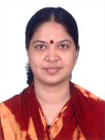
S Bhuvaneshwari
S. Bhuvaneshwari (b. 1976) has been studying the Prasthanatraya, Bhashya and Advaita Prakaranas from Swami Paramarthananda Sarasvati of Chennai since 1994. Having obtained a BA in Economics and MA in Public Administration, she later branched out and procured her Masters in Philosophy, and Sanskrit as well. She is a Gold Medalist in MA Philosophy from the Department of Philosophy, University of Madras (2004-06). She is the recipient of University Research Fellowship for her Doctorate at the Department of Sanskrit, University of Madars (2009-10) and was awarded the Ph.D (2010) for her study on the Sanskrit text Vicarasagara.
Her other area of interest is Philosophy of Art, especially the aesthetic theories of Bharata, Abhinavagupta and Hegel, and has been teaching Aesthetics and Indian Philosophy as guest lecturer in various reputed institutions in Chennai since 1997.
She continues her study of Advaita works in Sanskrit, Hindi and Tamil and is currently working on some unpublished Advaita texts available as paper manuscripts at the Government Oriental Manuscript Library and Adyar Research Library, Chennai. She has over fifteen articles to her credit in both Advaita Vedanta and Aesthetics.
|
|
|
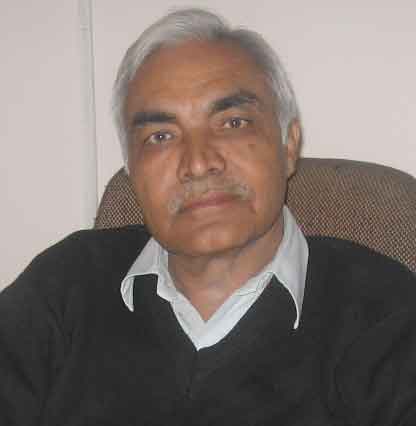
S C Malik
S.C. Malik with a teaching background in
Palaeoanthropology at m.s. University of
Baroda, was Also a Fulbright Smith-Mundt
Scholar at the university of chicage. From 1966
Until 1988 he was associated with the Indian
Institute of Advanced Study, shimal, in various
Capacities. From 1988 to 1997 he was a
Professorial UGC Research Scientist in
Anthropology.
His major contribution is in developing
Multidisciplinary research methodologies and
Formulating theoretical models for the study of
Indian Civilisation, lately eithin the Framework
Of philosophical anthropology. Some of his
majorbooks are: Indian Civilisation- The Formative
Period (A Study of Archaeolgy as
Anthropology); Understanding Indian Civilisation
-A Framework of Enquiry; Modern Civilisation-
A Crisis of Fragmentation; Dissent, Protest and
Reform Movements In Indian Civilisation;
Determinants of social in status in Indian; Intercultural
Dialogue and the Human Image; and Recon-
Ceptualising the Sciences and the Humanities – An
Integral Approach.
|
|
|

S M Y M Samiti’s
Yoga is a significant phenomenon
of Indian Cultural Heritage. Indian
Heritage in recent times, has been
influenced by the gradual scientific
developments in all the fields of life.
And Yoga is no exception to this. Yoga,
which was once upon a time, in ancient
days, was pursued by handful seekers
abiding in secluded places away from
social life, has now –a- days, become an
academic pursuit and is being
accepted in the curriculum of schools,
colleges and universities. Yoga is being
pursued for better adaptability,
increased intelligence, improved
learning ability, enhanced orderliness
in thinking better job performance and
satisfacition, the solace in the form of
alternative therapy and above all
universal brotherhood and harmony.
Such an application of Yoga could be
possible only through its subjection to
rational and scientific research in
modern times.
Way back in 1924, Swami
Kuvalayanandaji, pioneer scientific
Philosophico- Literary researcher in
Yoga, had visualized the Yogic
|
|
|

S S Barlingay
The late Professor S.S. Barlingay (Emeritus Professor of Philosophy) was the former Head of the Department of Philosophy, Poona University, Pune, India.
He was the Editor of three quarterly academic journals: Indian Philosophical Quarterly, Paramarsha and the Hindi edition of Paramarsha. Apart from a number of papers his major publications include "A Modern Introduction to Indian Logic", "SaunaryaceVyakarana",
"A Critical Survey of Western Philosophy: From Bacon to Kant", "Poverty, Power and Progress", "Beliefs, Reasons and Reflections". His last publication was a book on Ethics in India.
|
|
|
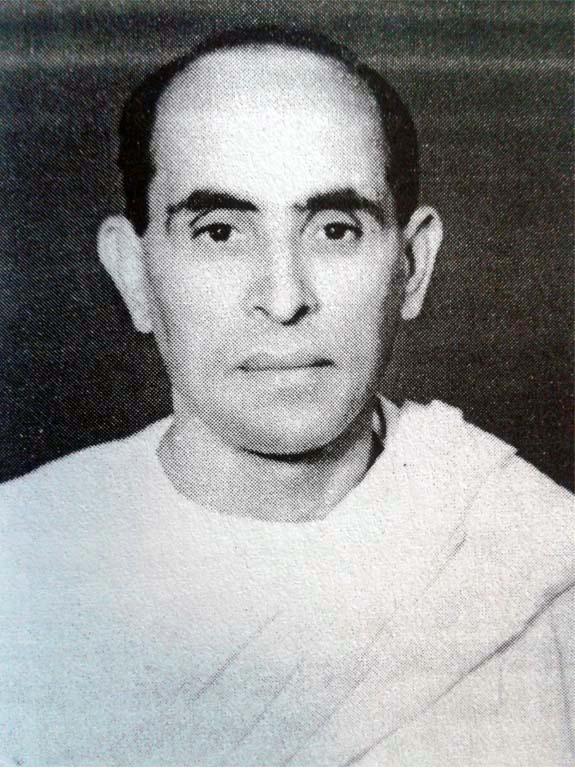
S S Cohen
Sulaiaman Samuel Cohen was jewish by race and lraqi by origin. An accountant by profession, Cohen came to India in his early youth and settled down here for life. He worked in Bombay for a few years, then joined the Theosophical Society and lived at its headquarters in Adyar, Madras for five years.
During this time Cohen heard of Sri Ramana Maharshi, came to Sri Ramanasramam with the intention of staying fourteen days and stayed fourteen years, from 1936 until the Maharshi shed the body in 1950. He was one of the many staunch devotees who lived at Palakothu, a Sadhu’s colony near the ashram.
Cohen was blessed to get an assurance from Bhagavan. After the house warming ceremony that he performed for the cottage he built at Palakothu, Cohen asked the Maharshi, “Bhagavan, you have given a home for my body, I now need your grace to grant the eternal home for my soul, for which I broke all my human ties and came.” Bhagavan stopped under the shade of a tree, gazed silently on the calm waters of the tank for a few seconds and replied, “Your firm conviction brought you here; where is the room for doubt?”
Cohen remained at Tiruvannamalai for some years after the Mahanirvana of the Maharshi. After a few years he retired to a quiet life in Vellore. He died in May 1980 and his ‘samadhi’ is within the Ashram Premises.
Cohen’s wide knowledge of Bhagavan’s teaching and steadfast devotion inspired him to write on his Master. His reminiscences are sublime and his elucidation of Bhagavan’s teachings is illuminating. His writings have inspired generations of devotees in their quest.
Books from this author - Forty Verses on Reality, The Essence Of Ribhu Gita, Guru Ramana, Srimad Bhagavata, Reflections On Talks With Sri Ramana Maharshi
|
|
|
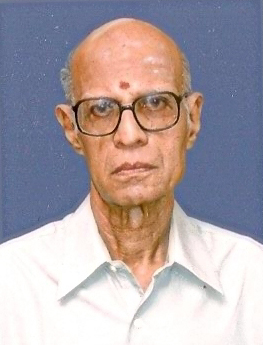
S.N. Sastri
Shri S.N.Sastri was born in Kerala, India, on 27th June 1922. After taking an M.A. Degree in Mathematics, he joined the Indian Revenue Service as an Income-Tax Officer in 1944. He rose to the position of Member of the Central Board of Direct Taxes, the apex body entrusted with the administration of the Direct Tax laws in India. He retired from service in June 1980. After retirement he studied advaita vedAnta under two eminent traditional scholars in Chennai, India.
|
|
|
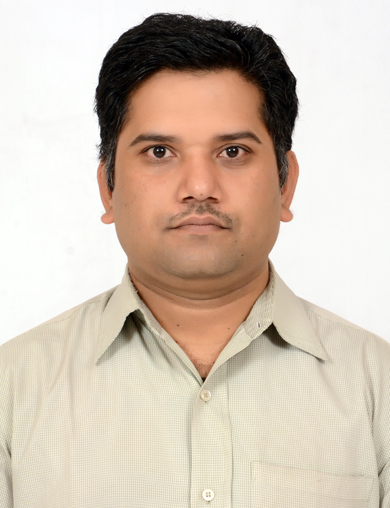
Sachin Kshirsagar
Sachin Kshirsagar is a devotee of Shri Nisargadatta Maharaj. Born in 1976, he completed his postgraduation in Philosophy. He also has a Post Graduate Degree in Hindi and in Commerce. In 2011 he received mantra initiation in deep sleep by Shri Nisargadatta Maharaj. He has compiled and edited 14 books in Marathi, one book in Hindi on Shri Nisargadatta Maharaj. He has also compiled and edited one book each in Marathi and English on Shri Siddharameshwar Maharaj.
Books from this author - Adhyatmadnyanacha Yogeshwar, Shri. Nisargadattagita, Purna: Shri Bhainath Maharaj Yanche Charitra Ani Shikwan (Marathi)
|
|
|
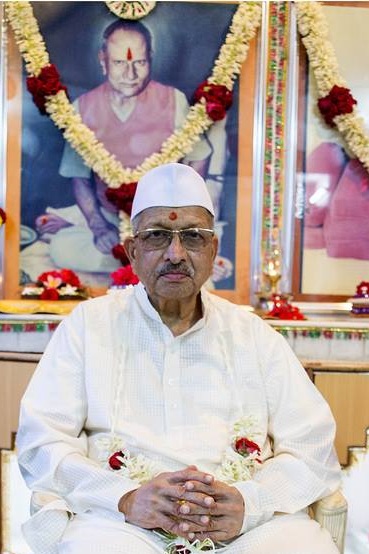
Sadguru Shree Ramakant Maharaj
Sadguru Shree Ramakant Maharaj
|
|
|
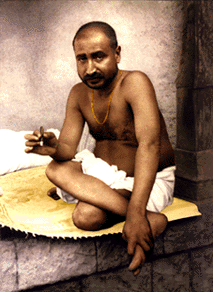
Sadguru Siddharameshwar Mahara
Sadguru Siddharameshwar Maharaj
Books from this author - Master Of Self-Realization – An Ultimate Understanding
|
|
|
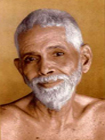
Sadhu Arunachala
Sadhu Arunachala was the adopted name of Major A. W. Chadwick, one of Bhagavan Ramana Maharashi's most ardent disciples. He has written several books considered to be classics, recording his impressions of Bhagavan's life, his teachings, life at Sri Ramanasramam and Bhagavn-inspired take on important Hindu scriptures.
Books from this author - A Sadhu's Reminiscences of Ramana Maharshi
Out of stock
|
|
|
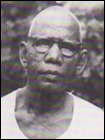
Sadhu Natanananda
Sadhu Natanananda was a distinguished scholar and devotee who first met Bhagavan in Skandashram. His collection of dialogues with Bhagavan, Spiritual Instructions has appeared in several editions of Bhagavan's own Collected Works. Sadhu Natanananda also edited Self-Enquiry in both the essay and question-and-answer formats. Bhagavan also gave the job of arranging the verses of Guru Vachaka Kovai, Murugganar's authoritative compendium of Bhagavan's teachings. In the early 1950s Sadhu Natanananda wrote Sri Ramana Darsanam, a book that contained many previously unpublished stories about Bhagavan which he used to make a penetrating analysis of Bhagavan's life and teachings.
Books from this author - Sri Ramana Darsanam
|
|
|

Sahajananda Nath
Sahajananda Nath
|
|
|
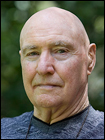
Sailor Bob Adamson
‘Sailor’ Bob Adamson travelled to India in the 70’s where he met with Sri Nisargadatta Maharaj. Bob’s Search ended in the presence of Nisargadatta. ‘Nisargadatta pointed to the reality, the actuality THAT I AM’.
‘Now I abide as THAT’ – ‘Sailor’ Bob Adamson
‘What you are in essence is self shining pure intelligence. The very idea of shining implies a movement. Movement is energy – so I call it ‘pure intelligence energy’. It is shining through your eyes – you cannot say what it is – and you cannot negate it either. It is ‘no thing’ – it cannot be objectified. It expresses itself ever fresh and ever new constantly. – If you stay with the question ‘Who am I?’ or that ‘I am’ thought – then it must be seen and recognized that it is only a thought. It is not the reality – it is an expression of the mind. Without that thought ‘I am’ – see what is prior to it. Is it stillness? Is it silence? Or is there vibrancy about it? – a Livingness, a Self-shining-ness.
Books from this author - What's Wrong With Right Now…
|
|
|

Saint Sekkizhar
Saint Sekkizhar was a poet and scholar of Tamil Shaiva Siddhanta, a Saiva saint contemporary with the reign of Kulothunga Chola II. He compiled and wrote the Periya Puranam (Great Purana), 4253 verses long, recounting the life stories of the sixty-three Shaiva Nayanars, the poets of Shiva who composed the liturgical poems of the Tirumurai. Sekkizhar's work itself became part of the sacred canon.
|
|
|
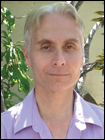
Sajohn Daverly
Sajohn Daverly has been a student of the Eastern wisdom teachings for over 35 years, assisting in the writing, editing and proofreading of books and magazines presenting Eastern philosophy and culture since 1979. Previously ordained into one of the traditional branches of the Swami order during his three years living in India, he has been sharing his spiritual insights with groups and offering individual consultations since 1996.
Books from this author - Bhagavad-Gita: The Ambrosial 'Sat-Song' Of Sri Krishna
|
|
|

Sanjiv Ranjan
"SANJIV RANJAN, founder of the All India Institute of Mind Body Medicine, is a gifted healer, visionary and reformist writer. In a clinical practice spanning more than 15 years, he has helped many people recover from various chronic and life-threatening diseases.
There is always an element of visible magic in all his healing sessions and workshops, and all those who have sought his help have felt a tangibly deeper connection with the universal mind, the state of being, where all miracles are born.
A clinical hypnotherapist from the California Hypnosis Institute, Theta healer trained by ViannaStibal of the THINK Institute, Idaho, USA, and an organ regeneration expert from the Arcady Petrov Foundation, Russia, his techniques are a fine blend of Eastern Mysticism and the more rapidly evolving Western field of Mind Body Medicine.
He believes that to live in health and happiness or to achieve a complete cure without depending on life-long medication, we need a certain kind of daring that relies on the ‘Intelligence of the Body’ instead of going against it, because the body is a phenomenon which is more than a million years old.
For the mind to move into resonance with something as ancient, miraculous and profound as the human body, it has to be infinitely wise and non-invasive. He is currently in the process of putting together an education system which is based on sensitivity and love, so that the future generations of mankind learn to live ‘free, responsible, and powerful lives’."
|
|
|
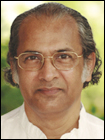
Sankara Bhagavadpada
Sankara Bhagavadpada’s credentials as a researcher in theoretical nuclear physics (1972-1982) as well as his ensuing years of selfless service (1983-2000) as an acharya in the spiritual mission of his Master Sri Sri Bhagavan, have profoundly impressed themselves upon his work, in the form of a systematic incisive enquiry as well as an intimate familiarity and understanding of the spiritual life. In March 2006 and in February 2007, he presented his astrological work in the spheres of Dharma and Moksha at The First and Second International Astrological Conferences in Gurgaon, India; again, under the chairmanship of Prof. V. K. Choudhry, and organized by the International Institute of Predictive Astrology [IIPA], Fairfield, USA. The Systems Institute of Hindu Astrology, founded by the renowned Vedic astrologer Prof V. K. Choudhry, conferred upon the author the honorary title of Jyotish Ratan in recognition of his contribution to Hindu astrology. The author’s unwavering devotion to the teachings of his four Spiritual Masters: Sri Ramana Maharshi, Sri Sri Bhagavan, Sri J. Krishnamurti and Sri Nisargadatta Maharaj, has certainly imbues his work with a spiritual intensity that is devoid of all narrowness.
|
|
|

Sant Dnyaneshwar
Sant Dnyaneshwar
|
|
|

Santan Rodrigues
Santan Rodrigues
|
|
|

Santosh Joshi
Santosh Joshi is a life coach and past life regression therapist
based in Mumbai, India. He Is a mechanical engineer and has worked
with Indian and international conglomerates for over 17 years.
His experience in the corporate world gave him insight into human
behavioral patterns and responses to various emotional challenges.
This helped him realize his inner calling. Santosh has dedicated
his life to help people bring about positive changes in life.
|
|
|
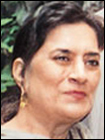
Santosh Sachdeva
Santosh Sachdeva was born in Sialkot, now in Pakistan. Along with her parents, two sisters and a brother, she had to flee Sialkot in the aftermath of partition in 1947. The family eventually settled in Mussoorie, a hill-station in India, nestled in the Himalayan foothills.
Right from her childhood, Santosh was exposed to mystical subjects as her father had an affinity for holy men (sadhus) travelling to and fro from the Himalayas. These men in saffron robes became a familiar sight at her house and Santosh grew up in an atmosphere graced by them. In the evenings, the house would resonate with the rhythmic sounds of mantras chanted by these sadhus. Santosh was thus influenced by them, and also by her parents from whom she learnt the value of believing that life is only positives. Thus, Santosh grew up in an environment which was naturally conducive to spiritual unfoldment.
Santosh was educated at the Convent of Jesus and Mary in Waverly (Mussoorie) and finished her college education from Delhi University (India). She was married to the Late Ajeet Sachdeva, a well-known figure in Indian Advertising. After the death of her husband, Santosh took up the dual challenge of raising a family and running a business in Mumbai (India).
It was only as recently as 1995, after her son took over the family business, that Santosh turned to Mental Physics (Brahma Vidya). She started attending the course conducted by Justice M. L. Dudhat of the Bombay High Court. This year marked the beginning of a significant period in her life. Little did she understand how this would completely change her life, bringing on a profound obsession with meditation and a surrender to the Higher Forces. She now continues to live with equanimity, a full life, even in semi-retirement. She hopes that her story will help validate similar experiences of others in meditation, and especially inspire young students to fearlessly undertake the spiritual journey.
Books from this author - Kundalini Awakening, Conscious Flight Into The Empyrean, Kundalini Diary
|
|
|
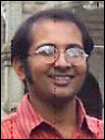
Saugata Bhaduri
A Ph.D. from Jawaharlal Nehru University, Dr. Bhaduri specialises in Indian and Western philosophy. With years of teaching experience, he is presently a lecturer at the Department of English and Modern European Languages, Jamia Millia Islamia, New Delhi.
Books from this author - Yoga-Sutra Of Patanjali
|
|
|
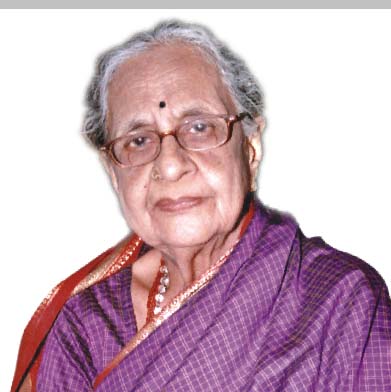
Sethu Ramaswamy
Mrs. Sethu Ramaswamy is the author of the celebrated autobiography Bride at Ten, Mother at Fifteen: Autobiography of an unknown Indian Woman (Roli Books: 2003). In Jan. 2009, the Canadian Broadcasting Corporation aired a documentary on her life produced by Sarmishta Subramanian titled ‘A woman of no consequence’. At 86 she continues to read and write and has just completed a manuscript titled ‘The Needle-thin Boy and other Stories’ meant for children and teenagers. She has also written ‘The Tales of Krishna’ again targetted at a young audience both of which are awaiting publication. Sethu Ramaswamy lives with her daughter and son-in-law in the Jawaharlal University Campus in New Delhi and delights in cooking for the family.
Books from this author - They Spoke With God
|
|
|
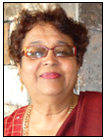
Shakuntala Hawoldar
Shakuntala Hawoldar came to Mauritius in 1968 and settled with her husband and three children at Beau Bois, St. Pierre.
She is an educationist of long standing and a well known poet and short story writer in Mauritius and abroad. She has published many collections of poems which have been translated into French, Malayalam, Russian and other languages. She is presently the President of the Mauritius Writers Association.
She has headed the media division of the Mauritius College of the Air for over two decades as Deputy Director and initiated the learning channel in Mauritius. She has worked for several years as advisor and consultant for UN agencies and contributed extensively in the field of Women, Children and Media.
She is the President of the Women’s Federation for World Peace and also heads the OSHO meditation centre in Mauritius.
Books from this author - Moksha, Aah! The Light - From Contemplation to Transformation, Nachiketas, The Magical Black Fish : And Other Stories for Saakshi and Amara, 13 Short Stories From Mauritius
|
|
|

Shakunthala Jagannathan
Shakunthala Jagannathan
|
|
|

Shalini Shrinivas
Shalini Shrinivas
|
|
|

Shannon Duncan
Shannon Duncan is a retired entrepreneur who left his profitable business behind to live a more peaceful and quiet life, working at cultivating the present moment, and teaching others to do the same.
As a striving entrepreneur, Duncan had always thought that money and success would bring him happiness. But when he retired a multimillionaire before the age of thirty and could buy almost any possession or experience he wanted, he realized that the source of happiness was definitely elsewhere. Through a series of realizations, brought about through self-exploration and study, Duncan recognized that what he was truly searching for was to feel safe, peaceful and content in the world. Once he gained the opportunity to realize what wouldn't bring him peace, he began to understand that peace was always within him, underneath the turmoil, if only he would surrender enough to see it.
Books from this author - Present Moment Awareness
|
|
|

Sheikh Jameil Ali
Sheikh Jameil Ali is a scholar of Islamic Studies who has been involved in research on aspects of Islamic history, thought and movements. He has authored and presented several papers on the subject in national seminars and conferences.
|
|
|

Shirish Kumar S Murthy
Shirish kumar S. Murthy was born in an orthodox Brahmin family in the year 1954. At the age of 20 he came across Ramana Maharshi’s book ‘The Gospel of Ramana Maharshi’ which changed his way of thinking to a great extent. In 1978 he met J. Krishnamurti and became his fan. The infatuation did not last long. The suffering and the confusion continued unabated. In 1979 he was mysteriously guided to Shri Nisargadatta Maharaj and the suffering reduced to a great extent but the confusion remained; questions and doubts kept on popping up. Maharaj in his irrepressible forthrightness said to him “I am not your Guru, your Guru will come at the appropriate time.” And thereafter for 15 years he got totally involved with life and suffered enormously. In 1995 he started yearning for a Guru. In 1996 he met his Guru Shri Ramesh S. Balsekar and there was no looking back, (in terms of inner happiness peace, nothing else).
Books from this author - Ramana Maharshi's Upadesa Saram, Calm Is Greater Than Joy, Dissolving Spiritual Confusion: The Essence of Ramesh Balsekar’s Teachings, Consciousness Strikes: The Gospel of Ramesh Balsekar
|
|
|

Shri Bhagavan
The Sage of Arunachala, also known as Bhagavan Ramana Maharshi. See under Authors for the titled Ramana Maharshi.
|
|
|

Shri Krishna
This book has been written mainly as a friendly
companion an adjuvant to a training in Pranayama
under personal supervision of a teacher. It has been
written with a view to give the student to correct and
the comprehensive information on all the different
aspects of Pranayama. It would in marking the
actual practice of Pranayama more effective as the
student will be able to discern between the essential
and the optional parts of the different techniques of
Pranayama. It would also help the student to keep the
Spiritual perspective in the forefront while
Under taking the practice of Pranayama.
|
|
|

Shri Samarth Sadguru
Shri S. S. Ganapat Rao Maharaj was born at their family residence in Kannur village (Bijapur District, Karnataka State, India) to Shri Shivarampant and Shrimati Saraswati on the day of Ganesh Chaturthi festival on September 18, 1909 the birth day of lord Ganesh. He was appropriately named Ganapati. As a child he was a loving, simple, straight forward, disciplined and preferred solitude. He had a keen desire to have darshan (vision) of God right from his childhood days. He had his primary and high-school education in Bijapur. He loved the company of Saints and had a great inclination towards spirituality, right from those days. If there were any spiritual programs in Bijapur he would be there for every function, be it a Kirtana, spiritual discourse or the likes.
|
|
|

Shri Samartha Ramdas
Shri Samarth Ramdas
|
|
|
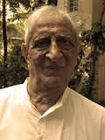
Shri Yogendra
ShriYogendra is the founder of the Yoga Institute, known as the oldest organized yoga center in the world, which islocated atSantacruz inMumbai.ShriYogendra (1897-1989), played a key role in developing medical hatha yoga,a step in the history of yoga that would later lead to the development of Yoga Therapy.
Sri Yogendra was born on 18th November 1897. When his met Guru PujyaShriParamahamsaMadhavadasaji, a 119-year-old yogi from Bengal, he was still in college. The meeting with ParamahamsaMadhavadasaji made Yogendra a devoted believer of Yoga. He joined ParamahamsaMadhavadasaji's ashram in Malsar city of Gujarat and started studying Yoga sincerely. He was a non-conformist and a very close bond developed between the Master and the student. The Guru taught him many things by direct experience. After completing his training, he decided to leave the ashram, in order to propagate the benefits of Yoga amongst the masses. Thus ShriYogendra became known as the Father of Modern Yoga Renaissance. A firm believer of yoga, Sri Yogendra founded the institute to promote the science of Yoga throughout the world. He was also credited with the revival of the classical yoga ideals.
ShriYogendra was also a brilliant poet. An influential person from Mumbai, Mr. Masani, once came across his poetry. Impressed with ShriYogendra, he invited him to his home in Versova, Mumbai. Mr. Masani offered him his own house as an ashram. This laid the foundation of The Yoga Institute of Mumbai. The Yoga Institute one of the oldest organized Yoga enters in the world. The Yoga Institute of Mumbai is a non-profit organization. It aims at helping people in physical, moral and psychic development, with yoga as an aid. ShriYogendra left the world in 1989, passing on his legacy to his son, Dr. Jayadev.
In 1918, ShriYogendra established the Yoga Institute at Versova, Mumbai. A year later, he went to USA where he founded one more Yoga Institute in New York. The following year, his ailing father summoned ShriYogendra back to India. He did the most unusual thing for a yogi - he got married to Sitadevi. Come to think of it, he was following the footsteps of ancient seers like Vasishta and Yagnavalkya. His wife, Sitadevi was introduced to yoga soon after her marriage in 1927. After two years of rigorous study, she became the Secretary of the Institute, and later, in charge of the Ladies' section. She contributed articles to the Journal of Yoga and also authored a book entitled 'Yoga Simplified for Women'. This book is ground breaking because it is the first authoritative book on yoga for women written by a woman. It paved the way for women to practise yoga, something that was prohibited until then.
Sitadevi faced immense criticism not only because she was a woman doing yoga, but also because she was a wife of a yogi. This yogi couple was challenging old traditions with their novel ideas. For instance, until then, yoga was confined only to yogis who practised it in the forests. But ShriYogendraji made it accessible to all. No longer was it an exclusive domain of a Sanyasi.
ShriYogendraji believed that yoga is the art of living. He wanted the common man to be able to follow it. So, he developed the breathing rhythm that accompany yogic postures and simplified yoga kriyas without diminishing their benefits. He wanted humanity to give as much importance to happiness and peace of mind as they did to material comforts. Yoga shows us how to find a balance between both and enrich our lives.
ShriYogendraji propounded the virtues of yoga, especially its holistic approach that explored the body-mind connection. He told his students that all those who have the urge to study yoga must come with an open mind. Only then can it change their lives.
ShriYogendraji passed way in the year 1989. But when he was in his early fifties, he handed over his legacy to his son Dr. Jayadev.
|
|
|

Shyamala Gupta
Shyamala Gupta (b. August 1931) is Bombay University's Ph.D. (Philosophy), with specialised interest in Aesthetics. And has been Research Fellow at the prestigious Indian Institute of Advanced Study, Shimla (1966-67). An untiring researcher and writer, she has published numerous papers in different journals and, in addition, has contributed as many as 27 articles to the 3-volume Marathi Encyclopedia in Philosophy (published by MEP Council, Pune). Also, she has authored two books, namely, The Beautiful in Indian Arts, and SaundaryaTattvamimamsa (Hindi) -both prescribed by Delhi University for undergraduate-level students taking a course in aesthetics.
Involved with the teaching of philosophy for well over three decades, Dr. Gupta retired, in 1996, as Reader from Kamla Nehru College, University of Delhi, Delhi.
|
|
|

Simon C Brown
Simon C Brown
|
|
|
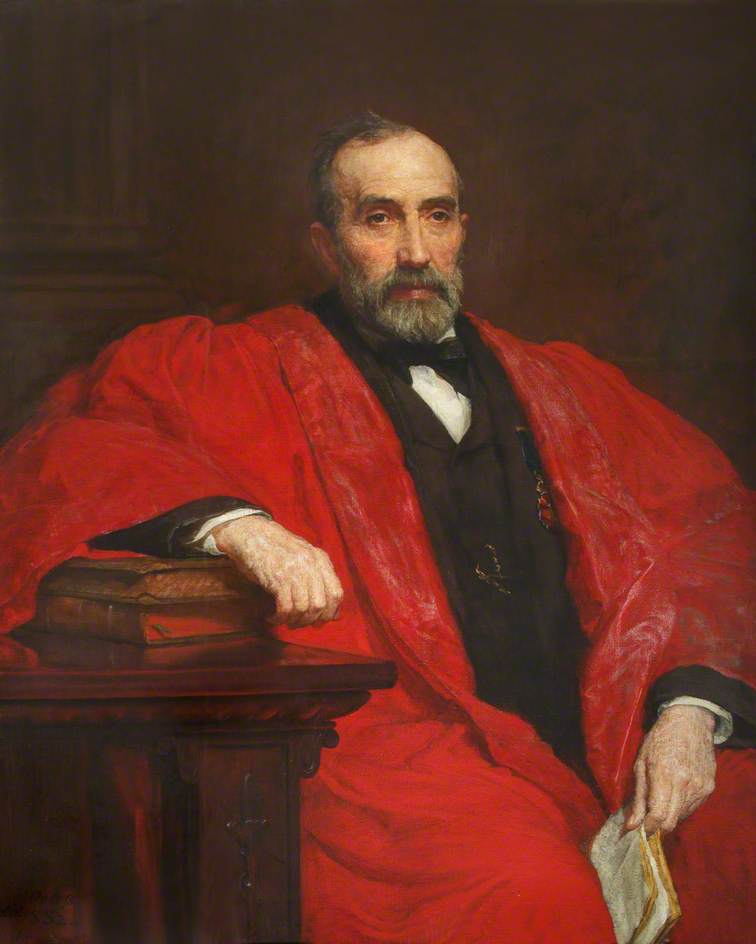
Sir Monier Monier-Williams
Sir Monier Monier-Williams (b. 1819-1899) in his earlier career taught Asian languages at the East India Company College, and delved deep into the cultural heritage of India, its religious practices in vogue, including modern Hinduism. His aims being practical rather than speculative and his vast practical knowledge of India and her people, earned him the professorship of the Boden Chair of Sanskrit at Oxford University where he studied, documented and taught Asian languages and also compiled one of the most widely used Sanskrit-English dictionaries. In 1883, he also founded the Indian Institute at Oxford University that provided a perfect training ground for studies focused on Indology.
|
|
|

Sister M Carol A C
Sister M Carol A C
|
|
|

Sister Mary Usha
Sister Mary Usha
|
|
|

Sitadevi Yogendra
Sitadevi Yogendra
|
|
|
|
|

Sri Jnananda Bharati
Gnanananda Bharati, was a Sanyasi, lawyer, philosopher, writer and author. Born as Krishnaswamy Iyer to Vakil G. Ramachandra Iyer and Janaki Ammal on 26 October 1889, Krishnaswamy passed his BA, MA and BL degrees at the University of Madras and practiced as a successful lawyer at Tirunelveli.
|
|
|

Sri Ramakant Maharaj
Shri Ramakant Maharaj, a direct disciple of Shri Nisargadatta Maharaj, was with the Master for almost 20 years. He is based in Nashik Road Ashram!
Shri Ramakant Maharaj received the Naam Mantra from Shri Nisargadatta Maharaj on 2nd October 1962, 55 years ago.
Shri Ramakant Maharaj followed in his Master's footsteps, offering the Naam Mantra to suitable devotees (at Master's discretion), and thereby Initiating seekers into the Lineage of the Inchegiri Navnath Sampradaya.
Books from this author - Ultimate Truth, Selfless Self
|
|
|

Sri Sankaracharya
Sri Sankaracharya
|
|
|
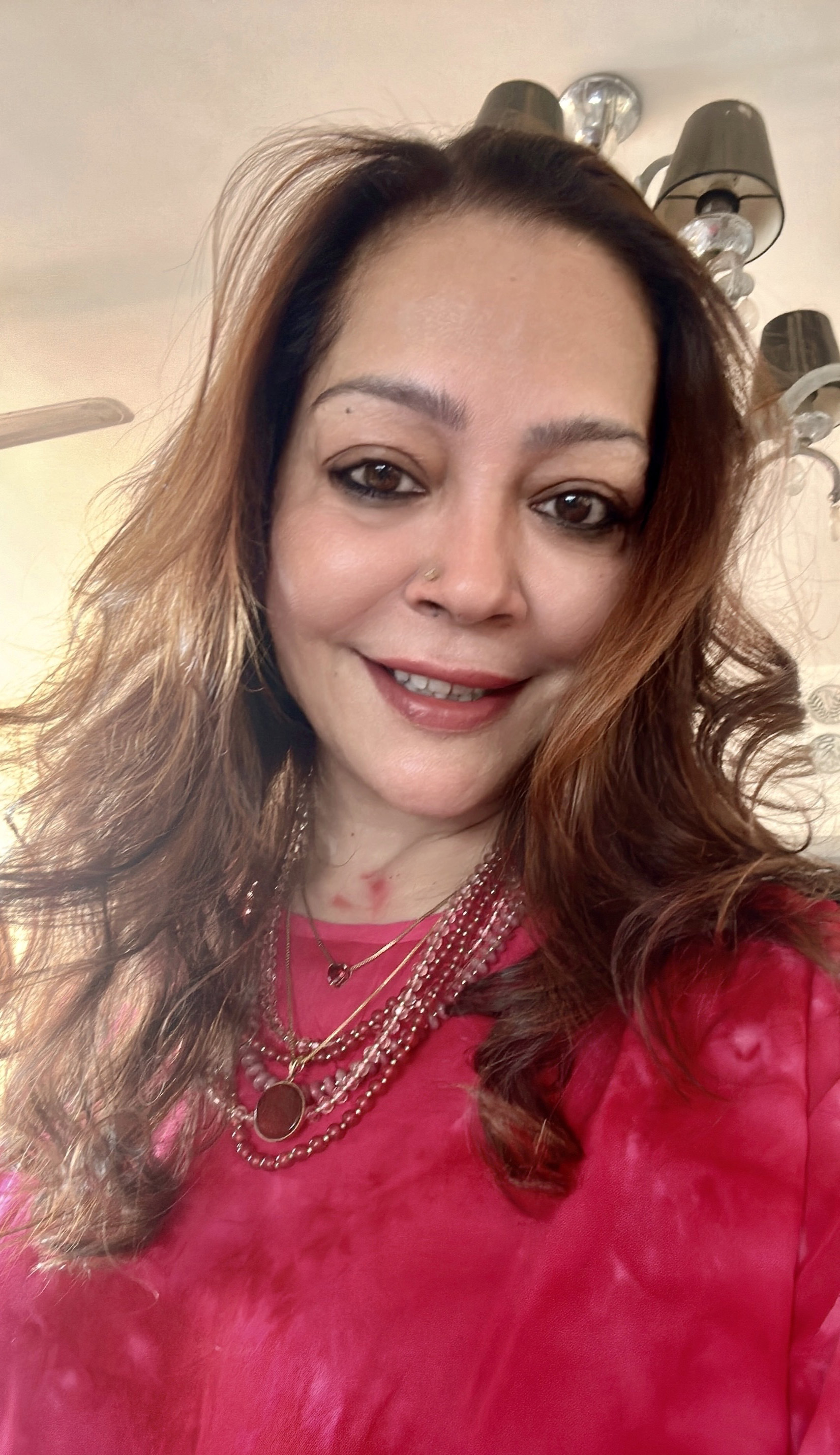
Srishti Sawhney
Srishti, has three decades of strong Marketing & Brand building expertise in diverse categories, products, industries, and, work cultures. She has proven ability in building, turning around, and, scaling up Brands with a strategic focus on Digital transformation, innovation and a passion for growing Brands into Market Leaders.
As a hands-on orchestrator of rapid growth, her width and depth of experience spans expertise in launching, building and transforming brands across Fashion and Lifestyle, Personal Care, Skin Care, Food, Retail Apparel, Wine and Spirits, FMCG, Airlines and Luxury Automotive.
As someone who has managed brands as a marketeer, a mainline advertising and a digital marketing professional she thinks today digital has given a lot more power to the consumer than ever before. It educates, enables, and empowers people before they make a choice. Fascinated with the power of digital marketing, she is excited about working with brands to help them achieve their business objectives in this new world.
Born and educated in New Delhi, Srishti currently lives and works in Mumbai, India.
An avid reader, Srishti enjoys an active lifestyle with daily Pilates and frequent mountain hikes. The Monkey, by the Chinese horoscope, Srishti is all Yin. She like beautiful things: aromatherapy, karmic healing, artistic yoga, sushi and Ben Affleck. And in the midst of all her professional and personal activities she loves spending time with pets and nature.
|
|
|
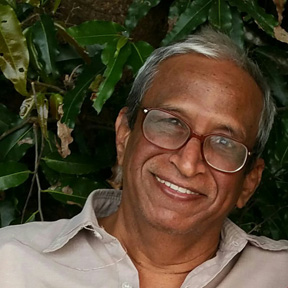
Subba Rao
..
Books from this author - The Call of Yoga : The Life And Mission Of Dr Jayadeva and Hansaji Yogendra
|
|
|
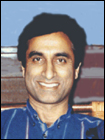
Subhash Kak
Subhash Kak is a widely known scientist and historian of ideas. Currently Donald C. & Elaine T. Delaune Distinguished Professor of Electrical Engineering and Professor in the Asian Studies Program at Louisiana State University, he has authored fourteen books and more than 250 research papers in the fields of information theory, neural networks, Vedic studies, and history of science. His books include The Ashvamedha: The Rite and its Logic, The Architecture of Knowledge, and the co-authored In Search of the Cradle of Civilization.
Books from this author - The Prajna-Sutras
|
|
|
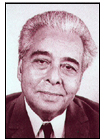
Sudhakar S Dikshit
Sudhakar Dikshit was born in 1909, in Rajasthan. Having completed his post-graduate studies, he struggled to make a living, working at the odd jobs that came his way-as journalist, publicist, business executive and teacher.
But he remained a prolific writer of short stories, poetry, plays, serious articles and books. He wrote in both Hindi and English and his writings became widely published over three decades. Dikshit authored five books.
Devoted to the study of philosophy, Dikshit founded Chetana and published highly selective books on philosophy, which he edited himself. His aim was to spread the ancient wisdom of the East worldwide. He preceived Chetana to be a bridge to Vedanta.
Sudhakar Dikshit died in 1995, at the age of 86, leaving Journey Towards Nothingness as the Final record of his lifelong pursuit of Truth.
Books from this author - I Am All
|
|
|
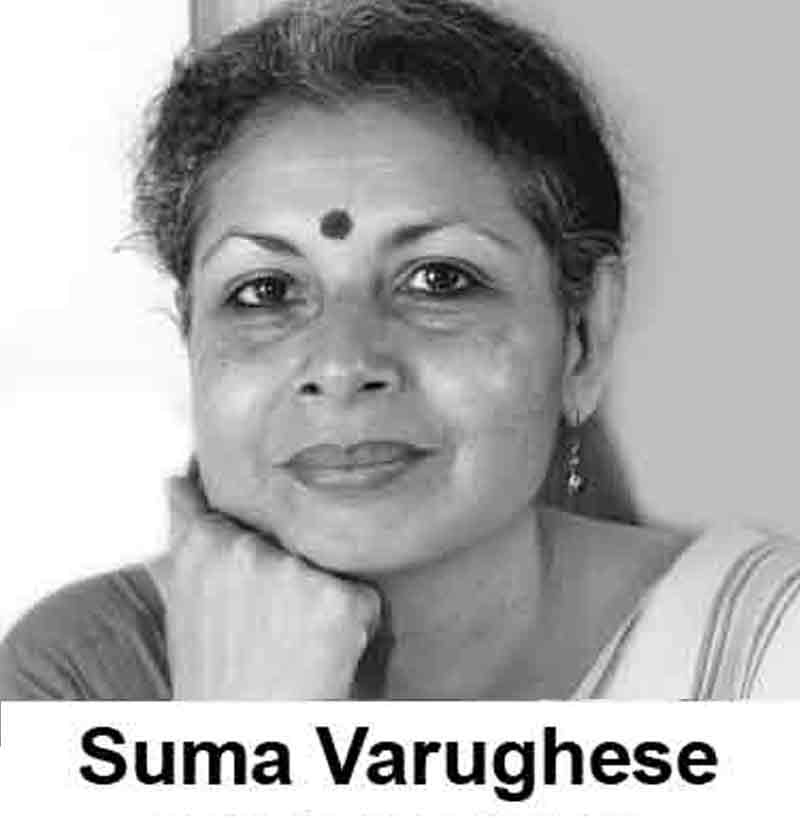
Suma Varughese
Suma Varughese has been working with Life Positive since its inception in April 1996. Beginning as bureau chief (Mumbai) she took over as editor-in-chief of Life positive in December 2005. A veteran journalist with more than 25 years of experience in magazine journalism, Suma was editor of the popular lifestyle magazine Society, for six years. Her movement into spirituality arose out of a deep experience in 1991, which enabled her to understand that true happiness arises only when one transcends the ego and focuses on the larger good. Ever since, she has been in pursuit of this absolute form of happiness. Along the way, she left mainstream journalism and devoted herself to spiritual journalism. Her articles arise out of a deep personal search for self-transformation and therefore evoke a response from the reader. Suma also contributes columns to Verve, New Woman and DNA newspaper.
Books from this author - The Laughing Buddha, Travelling Lighter, Travelling Light
|
|
|
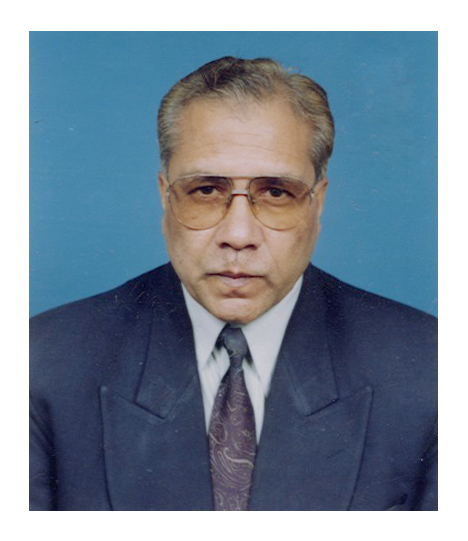
Surendra Singh Yadav
Dr. Surendra Singh Yadav is a Professor in the Department of Management Studies at IIT Delhi. He holds a B.Tech degree from IIT Kanpur. He did his MBA from Faculty of Management Studies, Delhi University and obtained his PhD from the University of Paris, Sorbonne, Paris.
He wrote "Krishna Arjuna Samvada" in Paris where he stayed for six years. He has written several books and papers in Hindi, English and French.
|
|
|
|
|
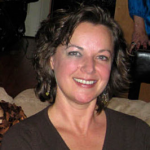
Susan D'Agostino
With no roadmap to follow, Susan D’Agostino
chose to face breast cancer without chemother-
apy, radiation or hormone treatment. Today she
is 8 years healthy and works as a professional
therapist and counselor. Dedicated to helping
other navigate life’s challenges and embark on
there own healing journey, she makes her home
in Vancouver, Canada.
|
|
|
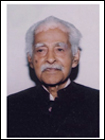
Sushil Kumar Saxena
Sushil Kumar Saxena (b. 1921) is widely known today as a scholar who has shown the way to look at Indian music, rhythm, and dance in the way of contemporary Western aesthetics. As a professor of philosophy at Delhi University, he distinguished himself with his very first book, Studies in the Metaphysics of Bradley (1967) published by George Allen & Unwin, London, and Humanities Press, New York, in their prestigious Muirhead Library series of philosophical works.
Dr Saxena introduced the teaching of aesthetics at Delhi University in 1964; and, since his retirement in 1986, has published a steady stream of scholarly papers in internationally reputed journals through the 1970s and 80s. What is more, he has produced six books on Hindustani music, rhythm and Kathak dance, besides a work on philosophy of religion, Ever Unto God: Essays on Gandhi and Religion (1988). His latest book is Hindustani Sangeet: Some Perspectives, Some Performers (Sangeet Natak Akademi, and D.K. Printworld 2010).
For all this scholarly work, Prof. Saxena has been honoured by Sangeet Natak Akademi with its Annual Award (2007) and its fellowship in 2008. He was bestowed the state honour, Padma Bhushan, also in 2008.
|
|
|
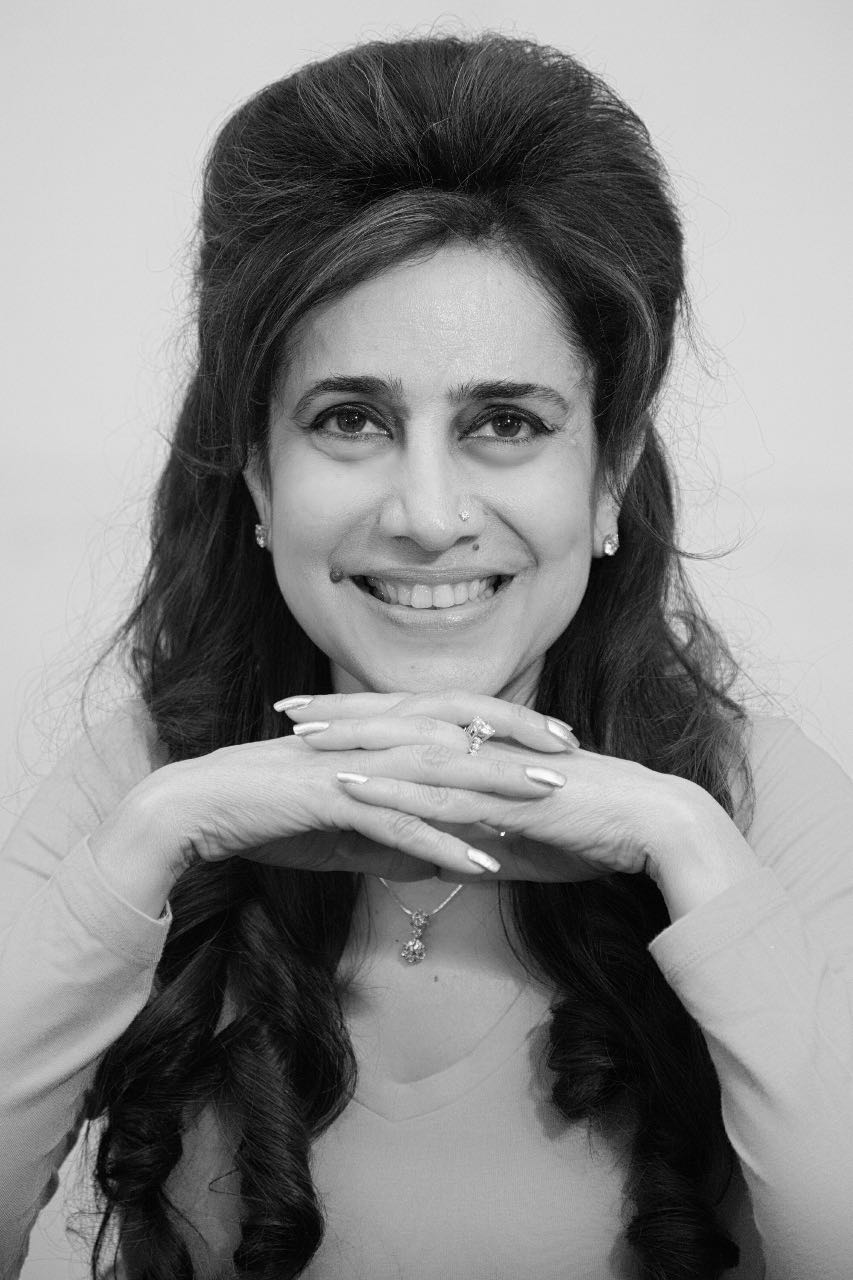
Suzy Singh
Eighteen years into an adrenaline-filled career in advertising, Suzy quit her job to focus on her passion and spiritual calling to help heal the personal and collective consciousness. Soon after, she encountered a terrible car crash that caused her near-death experience, further accelerating this deep desire. As a therapist and healer, Suzy has extensive clinical experience in multidisciplinary approaches to vibrational healing and energy medicine. Her work has helped innumerable people across the globe experience personal transformations, improve their health, find clarity, overcome depression and rebuild relationships. She has also many published articles to her credit.
Books from this author - 7 Karma Codes: Heal the Storm Within (Revised Edition)
|
|
|

Sw Tattvavidananda Saraswati
Swami Tattvavidananda Saraswati, sannyasi-scholar, honoured with the title ‘Vidya Nidhi’ by Sri Sankaracarya of Pushpagiri Matha, is an acclaimed teacher of the Vedas and the Vedantic literature, the Sanskrit language and the Epics, who has discoursed on the subject to various national and international audiences and conducted courses in gurukulas. He is also the author of several books in English and Telugu including Science of Krishna Yajurveda and numerous articles on Hindu philosophy.
Books from this author - Aditya Hrdayam, Sri Daksinamurti Stotram, Ganapati Upanishad
|
|
|
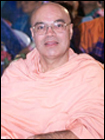
Swami Adhyatmananda
Sri Swami Adhyatmanandaji Maharaj of the Sivananda Ashram, Ahmedabad, is a beloved disciple of H.H. Sri Swami Chidanandaji Maharaj. He is a dynamic yogi having a multifaceted, magnetic and versatile
personality. He is a spiritual giant who touches the heart of everyone who comes in contact with him. Swamiji naturally radiates peace, love and divinity. People from all walks of life find solace in his holy presence. He is approachable to one and all, be it a chief minister or a celebrity tennis player or a layperson.
He is one of the most sought after speakers in India and abroad. His lectures are a spontaneous outpouring of divine wisdom. His ability to make the esoteric subject of spirituality simple through a perfect blend of humor, melodious singing and down to earth practical approach put him in a class all by himself. Swamiji is well known for his ability to lead kirtans to the highest ecstasy through his melodious voice and supreme devotion. He is the embodiment of love, purity and truth.
He is a yogacharya having conducted more than 560 yoga shibirs in India and abroad for armies, universities and private sector companies. He is an indefatigable master organizer, able to work for several days without sleeping. Unlike most of us, Swamiji can attend to several tasks simultaneously and has often been described as being astavadhani. He is a strict disciplinarian. He is prompt, precise and punctual.
For over a quarter of a century, he has been incessantly spreading the message of Holy Master Sri Swami Sivanandaji Maharaj all over the world. “Bear insult and bear injury that is the greatest Sadhana,” advised Swami Sivanandaji Maharaj. Sri Swami Adhyatmanandaji Maharaj has imbibed that as the guiding principle of his life.
Books from this author - Yoga: A Way of Life, Yoga and Health, Yoga For Better Living
|
|
|

Swami Chidananda
Swami Chidananda
|
|
|
|
|
|
|

Swami Krishnananda
Swami Krishnananda
|
|
|
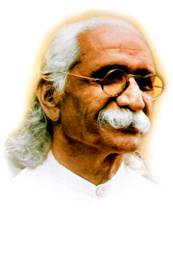
Swami Kuvalayananda
Swami Kuvalayananda was born JagannathaGanesaGune in a traditional Brahmin family in the village Dhaboi in Gujarat state, India.Kuvalayananda’s father, Sri GanesaGune, was a teacher and his mother, SrimatiSaraswati, a housewife. The family was not rich and had to depend for some time on public and private charity. Being from a poor family, Kuvalayananda had to struggle hard for his education. Nevertheless, at his matriculation in 1903, he was awarded the JagannathShankarsheth Sanskrit Scholarship to study at Baroda College where he graduated in 1910.
During his student days, he was influenced by political leaders like Sri Aurobindo, who was working as a young lecturer at the university, and LokmanyaTilak'sIndian Home Rule Movement. His national idealism and patriotic fervor prompted him to devote his life to the service of humanity. During this time, he took up a vow of lifelong celibacy.
Coming into contact with the Indian masses, many of whom were illiterate and superstitious, he realized the value of education, and this influenced him to help organize the Khandesh Education Society at Amalner, where ultimately he became the Principal of the National College, in 1916. The National College was closed down by the British Government in 1920 due to the spirit of Indian nationalism prevalent at the institution. From 1916 to 1923, he taught Indian culture studies to high school and college students.
|
|
|

Swami Lakshman Joo
Fathers of the Kashmir Monistic Saiva Thought, who flourished in the valley from ninth to thirteenth century A.D., were erudite scholars and eminent saints. They recorded what they practised and accomplished thereby. Later, there were interruptions in this line of thought. and it was mostly the ritualistic faith that kept the tradition alive. After Sivopadyaya, the eighteenth century scholar-saint who wrote commentaries and books of the kind, there appeared saints of the order during nineteenth century. But they, only taught the lore and made no use of pen. Early twentieth century saw the Kashmir of past glory blessed with a son who, not only practised and lived this wonderful philosophy-the Trika Saiva of Kashmir named Pratyabhijna Darsana-but also disseminated its postulates by teaching and writing among the seekers of Truth in the country and among those from foreign lands.
|
|
|
|
|
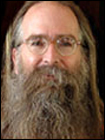
Swami Mangalananda
Swami Mangalananda first came in touch with Anandamayi Ma in 1973, after having lived for a year in an ashram established in her name in the USA. Swami Mangalananda had read and studied Ma's life before he came to India to meet with Ma. On the day he turned 20 years of age, Ma initiated him and gave him the name of Matriprasad, which means 'Mother's Grace'.
He usually accompanied Anandamayi Ma on her visits to several ashrams, except when he was specifically bidden by Ma to go and meditate at Haridwar by the Ganges. After several years, Swami Mangalananda returned to America to continue his sadhana. Circumstances finally arose when he could return to India and settle down permanently here. Once back, he devoted his energies to compiling an updated, short biography of Ma called 'A Goddess Among Us'. Today, he lives at Ma's ashram at Omkareshawar on the banks of the Narmada river, and continues his sadhana and seva.
Books from this author - Management Mantras
|
|
|

Swami Mitrananda & Yuvaveers
a
|
|
|
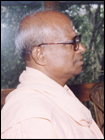
Swami Muni Narayana Prasad
Swami Muni Narayana Prasad, an internationally-acclaimed figure, Head of the Narayana Gurukula, a Guru-Disciple foundation started by Nataraja Guru, the disciple-successor of Narayana Guru. In 1960, he became a disciple of Nataraja Guru and he was initiated as a renunciant in 1984. He has travelled all around the world imparting lessons and has spent three years in Fiji teaching Indian Philosophy. He was the editor of the publication on philosophy, The Gurukulam for twelve years and continues to be one of its chief contributors. He has a number of published works to his credit, some of which in English include Functional Democracy — A Failure in India, Basic Lessons on India’s Wisdom, Karma and Reincarnation, and Commentaries on the Taittiriya, Katha, Kena, Prashna, Mundaka and Aitareya Upanishads
That which is written in the least number of letters (syllables), which is incontrovertible and reveals the essential teaching in all its aspects impeccably, with a free flow of thought, is understood as sutra by those who know it.
Books from this author - Chandogya Upanisad, Karma And Reincarnation, Garland Of Visions, Aitareya Upanisad, Isavasya Upanishad And Mandukya Upanishad
|
|
|
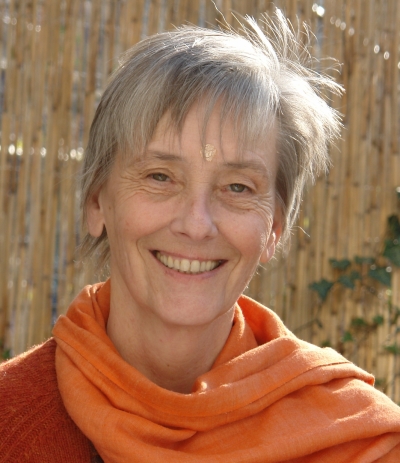
Swami Nityamuktananda
Dr. Christa-Maria Herrmann (PhD; MA; MEd; DAD; Dip Theology; Dip Ed; etc.), German by birth (1945), naturalized British, originally studied Theology; her university studies soon expanded to Education, Psychology, Philosophy and Art and Design (Ceramics). In fact she has never stopped studying and never stopped teaching. Be it in colleges and universities; in workshops and international conferences, in Yoga Institutes and ashrams; or even on Silent Retreats etc. etc. At the centre of her studies and teachings always is the subject of 'Self-awareness'.
Life in Asia (Australia and America) awakened her interest in Eastern Philosophy (Taoism and Zen) and led to the Zen-arts of Raku (as an artist potter she exhibited worldwide) and Shiatsu (one of several complementary medicines she studied and practiced).
As artist and philosopher merged more and more, a unique combination emerged of deep involvement in Meditation, Sattipahana (mindfulness) and Ngal So; as well as the contemplative practices of Jnana Yoga and Vedanta. Throughout, she worked with several great spiritual Masters among them Zen-Masters, great Siddhas, the Tibetan Lama and Tulku T.Y.S. Gangchen, the great Yogi Swami Maheshananda and H.H. Swami Anubhavananda (Acharya of Vedanta) and M.M. (Mahamadeleschwara) Swami Veda Bharati, disciple of Swami Rama of the Himalayas.
|
|
|
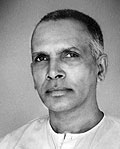
Swami Nityaswarupananda
Swami Nityaswarupananda was a monk of the Ramakrishna Order who is best known for his lucid English translation of the Ashtavakra Gita, comprising Ashtavakra's teachings to King Janaka, which was published by the Maharaja of Mysore. This edition was presented to Bhagavan Ramana Maharshi in 1932 who then meticulously wrote with his own hand all the Sanskrit verses above each Kannada verse.
Books from this author - Ashtavakra Gita (Archival Special Edition)
Out of stock
|
|
|
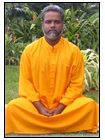
Swami Paramananda
Born in 1959, Swami Paramananda's spiritual search started at a very tender age and was accelerated by a vision of Lord Jesus. In 1979, he met his preceptor,Swami Veervasantha, who triggered in him the process of transformation. After attaining enlightenment in his mid-twenties, he started his life mission to help humanity at large by guiding them towards inner transformation the only way to establish peace, love, unity and brotherhood in the world.His teachings and guidance aim at the expansion of human consciousness through the science of meditation. In 1992, he founded the Satyam Gyanam Anandam Society, a name endowed with high spiritual meanings: Truth, Consciousness and Bliss.
As part of his activities, Swami Paramananda writes extensively in the "Know Thyself" magazines. He has also authored fifteen books, "Hidden Teachings in the Bible," "Man, God and the Universe" , "Wisdom of the Ancients", " Sex - Breaking the taboo", "Buddha - His scientific approach to life and the Nirvana", "SolahSamskaras", "Human Beings: Behaviour and Evolution", "Prayer" and "Guru: A Friend, A Guide and A Door","Four steps to Health and Enlightenment", "Spiritual Experiences", "Hinduism", "The Spiritual Aspect of Maha Shivaratree", "Expectant Mother" and "Pearls of Wisdom"- all of which have been well-acclaimed.The works of Swami Paramananda are attracting many seekers around the world and it is felt that his movement will provoke a spiritual revival and lead towards global mind transformation.
Books from this author - Four Steps To Health & Enlightenment, Human Beings : Behaviour & Evolution, Expectant Mothers, Man God And The Universe, Hinduism: Philosophy Or Mysticism?
|
|
|
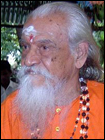
Swami Ramananda Saraswati
Swami Ramanananda Saraswati, earlier T.N. Venkataraman, was Assistant Manager of Ramana Ashram from 1938 to 1950 and its President until 1994 when he took sannyasa and gave over the managing of the Ashram to his eldest son, Sri V. S. Ramanan.
T. N. Venkataraman (nickname Venkatoo) was born on May 26, 1914 son of Sri Ramana’s younger brother, Nagasundaram Iyer. When Venkataraman was two years old, his mother Mangalam died and his father, Nagasundaram Iyer, went to Arunachala where he took sannyasa under the name of Sri Niranjanananda Swami. The child Venkatoo was brought to Tiruvannamalai on visits two or three times a year to see Sri Bhagavan who was then living in Skandashram. Because women were not allowed to stay in Skandashram, Bhagavan himself took responsibility for the child. On such occasions Sri Ramana would put Venkatoo to sleep, and in the mornings bathe the child and help him brush teeth in the morning!
At the end of 1938, the course of Venkatoo’s life changed when at that time he received a letter from the Ramana Ashram summoning him to Tiruvannamalai for good. On arriving he worked in the office, assisting Sri Niranjanananda Swami, the Sarvadhikari, whom he was to succeed as President in 1953.
For the installation of the Sri Chakra Meru and the Kumbhabhishekam of Mother’s Shrine (Sri Mathrubhuteswara Temple) Sri Venkataraman officiated in all the rituals on behalf of Sri Bhagavan and the Ashram. Again, when Sri Bhagavan attained Nirvana on April 14, 1950, the ceremonial acts of bathing, puja and burial on the following day were all performed by Sri Venkataraman.
Sri T. N. Venkataraman played, an active role in both the ritual observances and practical administration of the Ashram. After the samadhi of Sri Niranjanananda Swami, he had to go to Court and obtain a certificate of succession to administer the Ashram. In March, 1954 the Court declared that Sri T. N. Venkataraman was entitled to manage the properties under the Will of the Maharshi. When he took over the management, the Ashram was heavily in debt. Venkataraman retrieved it from this position and built up capital and property. Even a casual visitor to the Ashram can notice the substantial improvements; the number of new residential buildings, the facilities now available and the smoothness and efficiency of the whole administration.
In spite of such preoccupations and administrative worries, Venkatoo always managed to keep cheerful. His dealings with devotees and Ashram inmates were characterized by warm affection and thoughtful concern. The devotees, in their turn, held him in loving esteem and regarded him like a brother or father. At home he was very simple. His children called him ‘Anna’ (elder brother). The family could not have a comfortable life till after the eldest son had gotten a job; but, in spite of the hardships, he gave all his children higher education. Likewise he discharged in full his duty towards elders in the family.
All his children married except Sri Ganesan, the second son, who used to work as the Managing Editor of the Mountain Path and also assisted his father in running the Ashram. His achievements include completing Sri Bhagavan’s Samadhi, its Kumbhabhishekam in 1967, the opening of the Ashram Auditorium/Meditation Hall in 1970, and the renovation of Sri Mathrubhuteswara Temple (in 1967) and also bringing out many books on and by Sri Ramana.
On December 26th, 2007 Swami Ramanananda Saraswati (Sri T. N. Venkataraman), former president of Sri Ramanasramam, died peacefully at the Ashram.
|
|
|

Swami Samartha Ramdas
Shri Samartha Ramdas
|
|
|
|
|
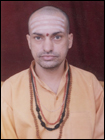
Swami Shantidharmananda Sarasw
Swami Shantidharmananda Saraswati is a scholar-saint who has been involved in the quest for spiritual knowledge for years. He received spiritual guidance and wisdom from spiritual masters at the historical pilgrimage centers — Munger, Rishikesh, Benaras and Omkareshwar. He has specialized in yoga, having received initiation from the great yogic master of modern times — Paramahansa Swami Satyananda Saraswati of Bihar School of Yoga, Munger. He currently resides and teaches in his own hermitage.
Books from this author - The Holistic Yoga
|
|
|
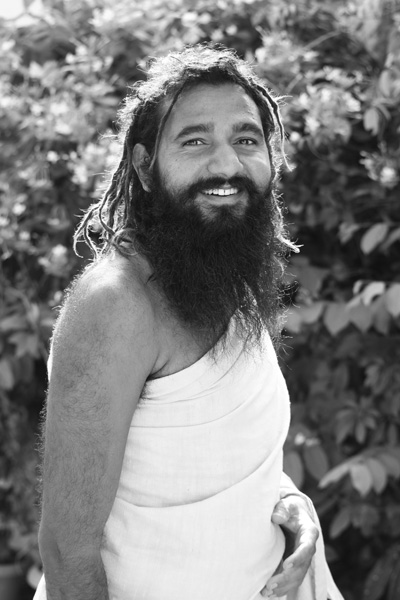
Swami ShashwatJi
SwamiShashwatJi was born in 1985 in the Dhar district of the Narmada region in Madhya Pradesh. His parents named him “Krishna”. By the grace of God, he repeatedly chanted the name of Lord Rama from the tender age of five. He started meditating for several hours every morning and every evening at the age of seven or eight.
At that time, he had three aims in life – to become a scientist, to serve his country or to search for the truth. From this young age itself, his interest grew in searching for new things and in serving others, but Swamiji also used to wonder if, after death, he would become a plant or a tree, an insect or a bug, a bird or an animal. When someone died in the village, Swamiji used to think, “This person has worked so hard, made a name for himself or herself, made money, and yet, he or she is dead. Will I also die like this one day? Will I also be cremated or buried?”
It became very clear to him that no matter how much wealth, respect or status one has, death is inevitable, and it is impossible to avoid this cycle of life and death. So, he turned his mind away from everything else and completely surrendered to the love of the divine. He would spend most of his time remembering the Lord.
Listening to stories about saints like Dhruv and Prahlad increased his longing so much that he too decided to go deep into the forest to do japa and meditation. He had heard that God protects his devotees in all places and in all situations, and he was sure that the Lord would also protect him. He has no knowledge of sacred texts, nor the company of holy men and saints, but only faith and trust in the Lord. At the age of fourteen, he left his home in the search for God.
Books from this author - Living Every Moment:Pointers for Self-Realization, Har Pal Jeene Se: Svayam Bodh
|
|
|
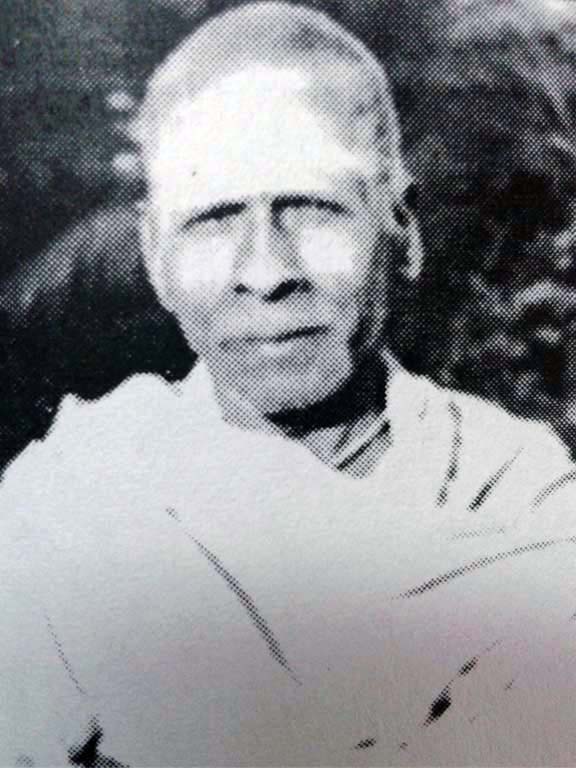
Swami Sivananda
Swami Sivananda
|
|
|
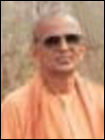
Swami Sureshananda
Swami Sureshananda, fondly referred to by his pre-monastic name as Hari Maharaj, was the Correspondent of the Sri Ramakrishna Vidyashala at Mysore. He was well known as one person who lived by the Advaitic principles as elucidated by Shankara. He had extraordinary managerial abilities and his fund raising prowess made him a legend in the Ashram circles. He has written interpreations and commentaries on some of the best-known classical Sanskrit texts, among them Yoga Vashishta Sara.
|
|
|

Swami Swaroopananda
Swami Swaroopananda
|
|
|
|
|
|
|
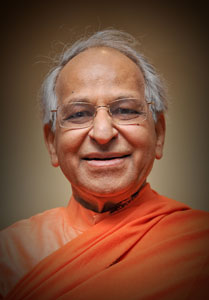
Swami Veda Bharati
Mahamandaleshwar Swami Veda Bharati (D.Litt.), Chancellor, HIHT University, Dehru Dun is a world visionary, having been known to recite and teach the systems of Indian philosophy, language, literature and scriptures from the age of nine. A graduate from the London University, Swamiji is a D.Litt. from the University of Utrecht, the Netherlands. In one of his sojourns in the US, as professor of Sanskrit at the University of Minnesota, Swamiji met Sri Swami Rama of the Himalayas his Gurudeva. Swami Rama, recognizing the potential of Swamiji, initiated him to the highest path of dhyana-yoga.
For the last sixty-eight years, Swamiji has been lecturing on meditation and Yoga, worldwide, and establishing meditation centres across the globe. He has authored numerous books and articles. His two ashrams in Rishikesh are well recognized as the authentic seats for learning the depths of meditation in the tradition of Himalayan Masters.
|
|
|
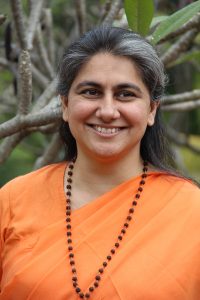
Swamini Supriyananda
A psychologist by profession turned Sanyasini (Hindu Monk), storyteller, author and teacher, she left the world of the inner workings of the mind for that beyond the mind. Of Indian origin, born in South Africa and raised in Australia she currently resides in Hong Kong and is a globe trotter of the Chinmaya Mission, spreading the vision and sharing the knowledge of Vedanta.
Inspired by Swami Chinmayananda’s teachings she understood this ancient wisdom’s adaptablilty to solve modern problems. She adopted a life of monastic living and service to the vision of her Guru and scriptures. True to the Mission’s motto she aims to reach people of all walks of life. Embracing modern technology she has a bite size podcast called ‘Thinking about it’ and an instagram account full of quotes. You can listen to her podcasts on Her ability to break down the Highest Truth in a language that we can understand and relate to without sacrificing its profoundness is what draws people. She nurtures the mind by providing food for thought to contemplate on. Her chosen medium may be words but it is the wisdom, warmth and gentle nature behind them that leave you in awe and wanting more.
|
|
|
|
|
|